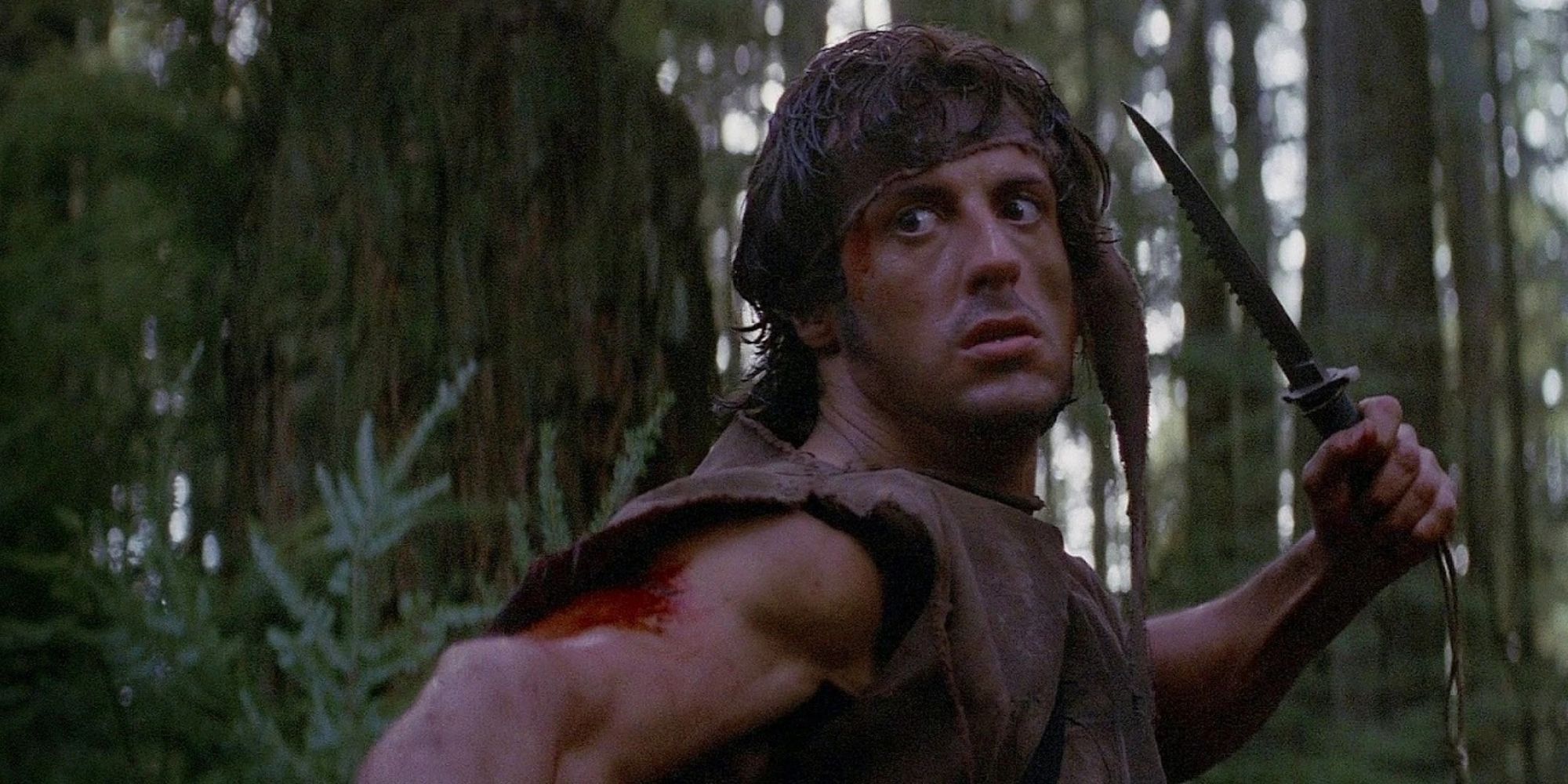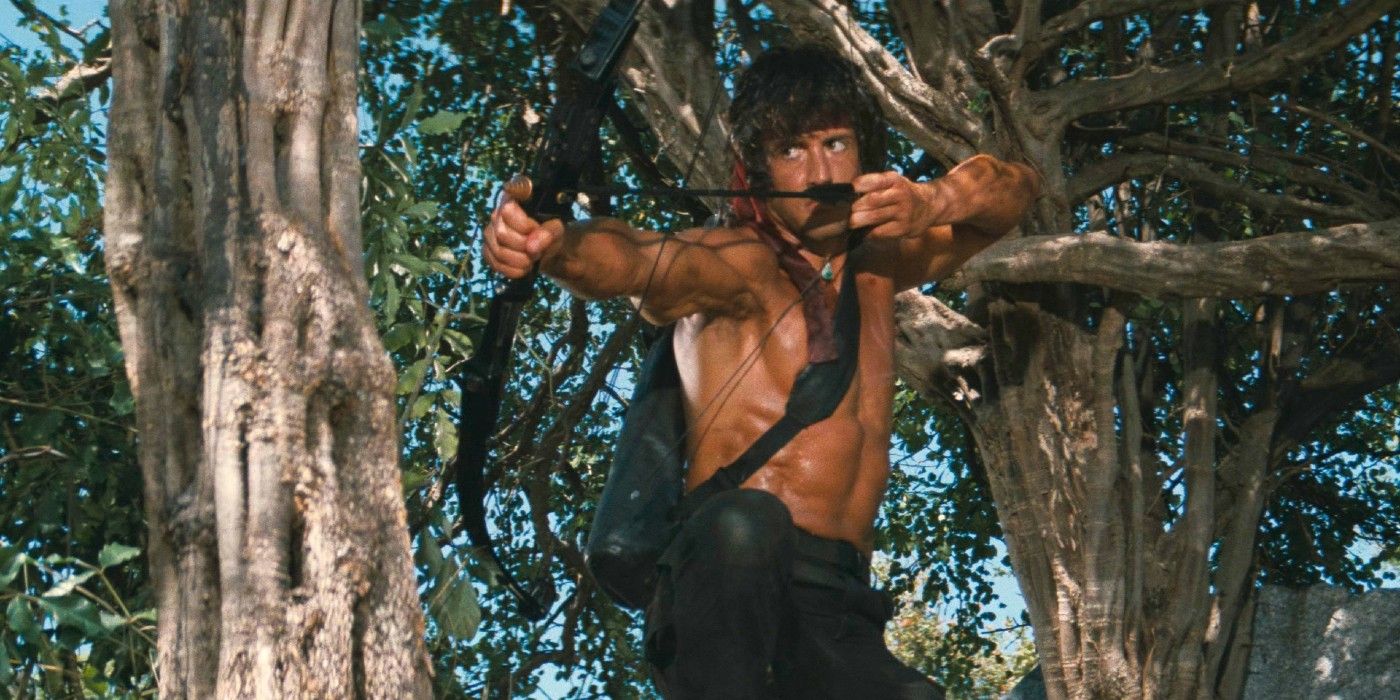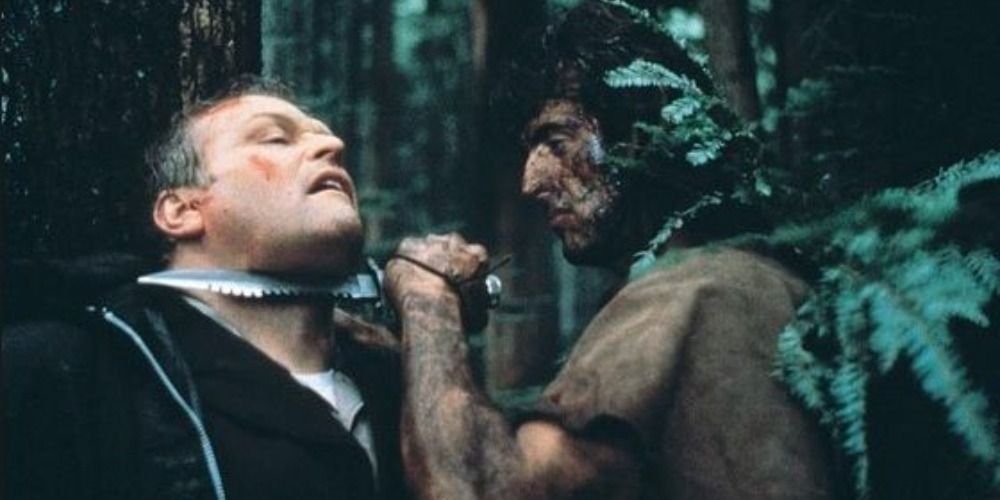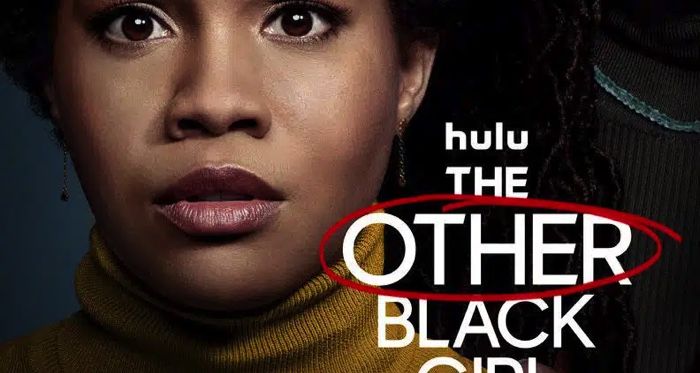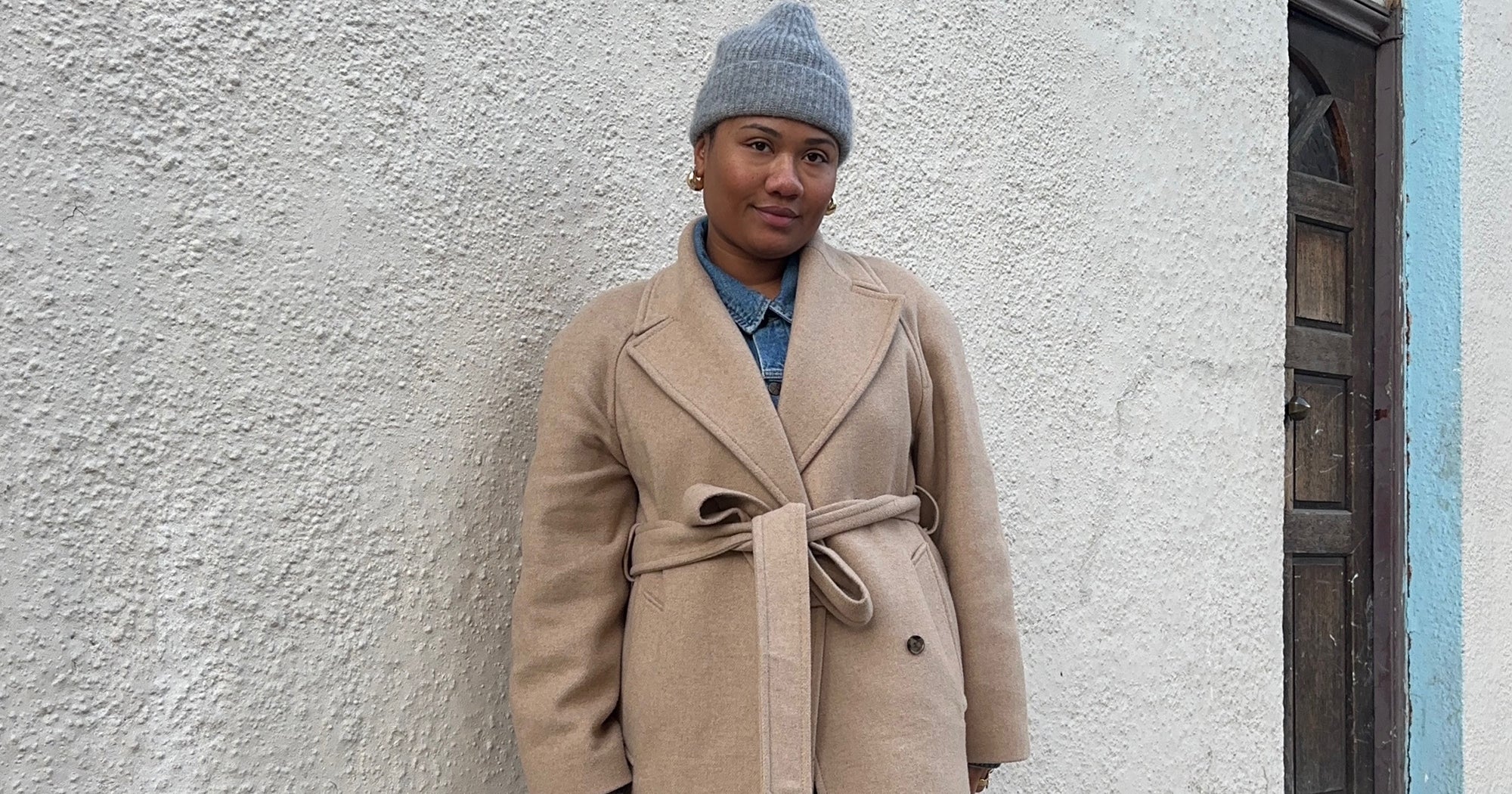The Big Picture
- First Blood, the first film in the Rambo series, is not your typical action movie – it tackles weighty themes like police brutality and trauma while providing thrilling entertainment.
- The film’s director, Ted Kotcheff, expertly balances intense action with beautiful cinematography, capturing the awe of nature and the isolated paranoia of the protagonist.
- While First Blood has its fair share of action and thrills, it also takes the time to develop a deep and emotional story, making it stand out from other films in the genre. It culminates in a powerful scene that showcases Sylvester Stallone’s exceptional performance.
When you think of action movies, you think of pure bombast. These are loud movies littered with gunfire, explosions, one-liners and a fiery tone, always in it for a fun time. It isn’t very common that releases in this genre take their time to make you feel anything other than excitement, have a strong story, or anything greater than one-inch character depth. But movies like Terminator 2: Judgment Day, the Daniel Craig James Bond run, and last year’s Top Gun: Maverick are a few examples of action films that aim to get the audience attached to the characters so that when something happens to them, you actually care. While there are movies in this genre that make you fond of the protagonists, there are even fewer that deal with such emotional and difficult topics as well as First Blood.
One of the greatest of these is 1982’s First Blood, the first film in the Rambo series. First Blood is essentially a chase scene for the majority of its runtime, one with all the explosions and bullets that you might come to expect, but counterbalanced with a quiet nature that leaves the viewer room to soak in its weightier ideas on police brutality and trauma. Forty years later, the movie holds up not only as the best in its series, but as one of the greatest action movies ever made.
Those that are unfamiliar with the Rambo franchise might think of every entry in the series as the same type of movie, and they wouldn’t be totally wrong for doing so. The majority of this series is basic action movie filmmaking 101, centered on a jacked lead firing endless rounds of bullets at armies of nameless villains. The explosions keep on coming and the movies continue to get bloodier as they get made. Yet John Rambo’s (Sylvester Stallone) big-screen debut in First Blood is actually a simple, emotional story. Despite being an action film, First Blood is about more than just its action.
The First Rambo Movie Is Based on a Novel
The film is an adaptation of a 1972 novel of the same name, written by David Morrell. The original book has an even tougher story than its eventual movie, one that would be led by Stallone. The Rocky actor used his clout to make certain changes from the novel to the big screen so that the lead would be a more sympathetic character. While Rambo does go to great lengths to defend himself in the movie adaptation, unlike the book, he never directly kills anybody. Stallone set out to bring a character that audiences would feel for and he did so in spades.
While Stallone was heavily involved with bringing the character to the big screen, Ted Kotcheff would be the one to sit in the director’s chair. Kotcheff and cinematographer Andrew Laszlo shoot much of the film in wide shots, capturing the beautiful natural landscape of British Columbia (standing in for Washington) on a gargantuan canvas. A large portion of the film’s runtime has Rambo either walking or running while being surrounded by a sea of trees, endless white water rapids, and towering waterfalls. The way Kotcheff crams such a wide variety of natural beauty into these shots, framing Rambo in the midst of it all, creates a combined awe of nature and isolated paranoia. It’s a cozy-looking movie as you travel through the small town of Hope, Washington, and its surrounding woods, but also has a real sense of dread as you wonder which corner of dense trees one of Rambo’s threats might come from.
‘First Blood’ Is a Slower Burn Than Most Action Movies
First Blood also takes time with its story, and this choice in pace enhances the story. The first thing we see in the film is Rambo walking around the bend of a mountain down a long dirt road. He comes upon a small community nestled up alongside a long, clear lake on his search for his old friend Delmar Barry, who served with Rambo in Vietnam. The scene begins with bright, hopeful music and the sounds of children playing, but as Rambo begins speaking with a woman in town, the mood quickly turns dour. There is a shot that’s just over a minute long of Rambo explaining the relationship between himself and Barry. Kotcheff lets the conversation linger and Stallone’s performance runs just long enough to where you know what’s coming before anything is even said. As the audience learns that Barry died from complications with cancer, Stallone goes from a quiet shock to a solemn acceptance. It’s a masterful performance. Just under the four-minute mark, this scene tells you all that you need to know. This isn’t Die Hard or Point Break, First Blood is on a level of its own.
From there, he makes his way into Hope, Washington, and is almost immediately harassed by Sheriff Will Teasle (Brian Dennehy). He tells Rambo that the town does not welcome drifters and drives him to the edge of town, where Rambo proceeds to turn around and make his way back into Hope. Enraged, Teasle arrests Rambo and takes him back to the police station where Rambo is repeatedly beaten and provoked by police officers. Their treatment of him triggers his PTSD, bringing back disturbing flashes of his experiences in Vietnam. This continued setup only makes the eventual action more intense. These early scenes not only enhance the richness and depth of Rambo’s character, but makes the character especially sympathetic. Not only that, in just a few scenes, Kotcheff tells you everything you need to know Hope’s law enforcement—they’re just a bored group of police officers who, once they have somebody that they can push around, will wring their circumstances totally dry, even if it means pushing somebody to the edge.
‘First Blood’ Is a Quiet Action Film
It doesn’t take long for Rambo to escape from the police station out into the wilderness. This is where the film’s long chase and, more importantly, its action really takes off. While First Blood doesn’t necessarily contain the most fun action set pieces in the world, they are fantastic, and the serious tone keeps the film from having too much levity. There is an exciting score by Jerry Goldsmith thrown in throughout, but most of the time, Ketchoff allows the film’s sound to breathe with the sounds of nature. Married perfectly with the film’s wide open cinematography, the film’s sound keeps things so quiet that you’re constantly listening for anyone that might be coming close. It does get to be very satisfying when the tables start to turn and the police realize that they are now the ones being hunted instead. As Rambo continues to fight back, but never kills them, the film really earns a few crowd-pleasing moments. First and foremost, this is a film concerned with its story and characters, but that doesn’t mean it refuses to deliver thrills.
Without spoiling anything, the film eventually culminates in a scene where Stallone delivers, perhaps, the greatest scene in his entire career. Between two long takes, Rambo emotionally details the daily mental and social struggles of his life post-Vietnam. Stallone is truly powerful here. It’s a scene that, despite the thrilling nature of the film, rounds out the clear intentions that it had all along: the story of a Vietnam veteran who sacrificed so much for his country, yet was given so little in return. It’s a scene that, seemingly, the rest of the franchise would go on to forget. While the other Rambo movies can be a lot of fun, it’s jarring to think that a wild action franchise was spawned in the wake of such a powerful scene. It’s a similar situation to Stallone’s Rocky series, one that had humble beginnings in a film that placed a strong emphasis on story, yet would eventually get carried away into conventional blockbuster filmmaking. That’s not necessarily a bad thing, the Rocky movies are a blast, as are most of the Rambo movies, but rarely ever do they return to what made their original films so great in the first place. Four sequels later and forty years down the road, the Rambo franchise would go on to have a lot of fun, but it would never be as good or return to its quieter, serious roots found in First Blood, one of the greatest action movies of all time.























































![Social Media Spring Cleaning [Infographic] Social Media Spring Cleaning [Infographic]](https://imgproxy.divecdn.com/9e7sW3TubFHM00yvXe5zvvbhAVriJiGqS8xmVFLPC6s/g:ce/rs:fit:770:435/Z3M6Ly9kaXZlc2l0ZS1zdG9yYWdlL2RpdmVpbWFnZS9zb2NpYWxfc3ByaW5nX2NsZWFuaW5nMi5wbmc=.webp)
![5 Ways to Improve Your LinkedIn Marketing Efforts in 2025 [Infographic] 5 Ways to Improve Your LinkedIn Marketing Efforts in 2025 [Infographic]](https://imgproxy.divecdn.com/Hv-m77iIkXSAtB3IEwA3XAuouMwkZApIeDGDnLy5Yhs/g:ce/rs:fit:770:435/Z3M6Ly9kaXZlc2l0ZS1zdG9yYWdlL2RpdmVpbWFnZS9saW5rZWRpbl9zdHJhdGVneV9pbmZvMi5wbmc=.webp)




